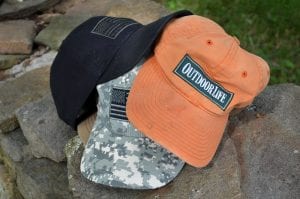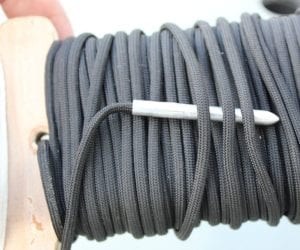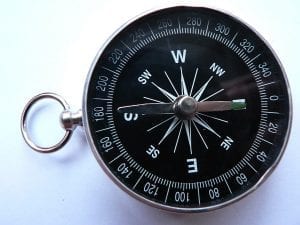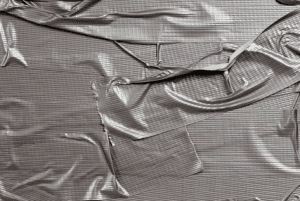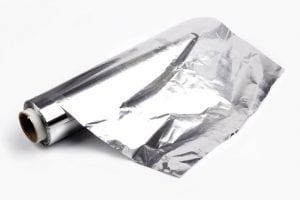Putting together your bug out bag list? What you choose to bring with you when catastrophe strikes could make or break your chances of survival. This is why survivalists prioritize creating the perfect bag to bring along.
This guide will cover 175 essential items for your bug out bag checklist. This is a comprehensive list and not all items may be needed. Just make sure you are ready to go at a split second’s notice when an environmental disaster, attack, or other life-threatening situation occurs.
Why You Need an Emergency Pack
If you live in a major city or suburbs, you should practice bugging out regularly in case of disaster. This involves memorizing alternative routes in your area, knowing how to choose a location for bugging out, and organizing your bag, of course.
Bug out bags are very helpful to have but must be prioritized depending on the specific threat you’re facing. What goes in the best bug out bag? For you to prioritize your bag properly, you should first know exactly why you need one at all. Let’s look at some of the most common reasons.
Your Current Location is No Longer Safe:
The ideal scenario is always staying at your place and bugging in instead of bugging out, but that isn’t always possible when disaster strikes. You may find yourself in a situation where you have less than 15 minutes to grab your things and leave with little to no advanced warning.
Organized and Ready-to-Go Essentials:
Having a bug out bag cuts out the worry of having to prepare everything in the moment when a survivalist situation strikes. Your bag will already be ready to go with the emergency items you need and should last you for 72 hours until you reach your bug out location.
Protects your Sensitive or Important Items:
Protecting important and personal objects is another good reason to keep a bug out bag packed and ready. Your bag should protect essentials like identification, cash, and birth certifications. If these are ruined by water damage or other elemental factors during a disaster, you won’t have another chance to recover them.
Image via Medium.com
Bug Out Bag List Items
You’ll quickly notice that no single bag could fit every item on this list. It’s important that you assess your situation, your surroundings, and your location before deciding which items will work for you. No matter what your situation looks like, a mix of the following items on this bug out bag list will ensure you get to your safe location in one piece. However, it’s up to you to choose what’s most appropriate for your own survival and that of your bug out group. Let’s begin with the most crucial item of all.
Water, Water Storage, and Water Preparation
- Water
Having at least some water with you in a survivalist situation is important. But water is heavy, so you won’t be able to fit much on your bug out bag checklist. Try limiting this item to what you can fit in your water containers.
- Hard Water Bottle
Get a bottle made of stainless steel instead of plastic. This will mean you can boil water in the container and that it won’t get crushed. Start your journey with a full bottle and refill as you go.
- Soft Water Bottle
Next, you’ll want to add a lightweight water container, such as a hydration bladder to your bug out bag list. These are collapsible, lightweight, and often allow you to drink on the go.
- Purification Tablets
When you don’t have time to boil the water you’ve collected in streams and rivers, purification tablets will allow you to purify while on the move. They also don’t weigh much.
- Water Filter
The best bug out bag will include a water filter. A quality product will remove soot, dirt, and harmful bacteria from your water. You can never have enough methods of purifying water since staying hydrated is one of the most important parts of bugging out.
Survival Apparel
- Long Sleeve Shirt
You need to have at least one basic long sleeve shirt on your bug out bag list, and try to make sure it’s lightweight.
- Tactical Pants
Tactical pants are durable and come with the benefit of pockets for storage, which are perfect for adding to your bug out bag checklist.
- Flex Brim Hat
Also known as a “baseball cap,” get a basic flex brim hat to shade your face from the sun and keep sweat out of your eyes. Fortunately, you probably already have this bug out bag list item in your closet.
Image via Outdoorlife.com
- Socks
While you need to limit the amount of clothing you bring, socks are one of the items you need to rotate daily. Get at least one to two warm pairs and make sure the rest are durable.
- Fast-dry Undergarments
Get some quick-drying undergarments that you can hang on your backpack to dry. These have been designed to dry fast, so you just need two sets and can rotate every day.
- Sewing Kit
When you only have a limited amount of clothes, you will need to get a sewing kit. This way, you can fix any rips or tears on the go. If you aren’t sure how, it’s time to learn how to sew.
- Safety Pins
These are useful not just for clothes, but also as a basic multi-purpose item for holding together rips in your tent or other items. Try to get heavy duty safety pins, which will hold up better in an outdoor environment.
- Warm Gloves
In case you have to bug out when it’s cold, gloves will be crucial for preventing frostbite and general discomfort. Get a durable pair, ideally that will allow you to use your firearm or knife without having to remove them.
- Work Gloves
You’ll also need a durable pair of work gloves for handling tools and chopping wood, to protect your hands. Add these to your bug out bag checklist.
- Beanie
You need to retain as much of your heat as you can while outdoors. Pack a quality beanie in your bag, preferably in a neutral color or camo print.
- Hand Warmers
Warming packets are a great item for your bug out bag list since losing your toes or fingers would be the end in a survivalist situation. They should only be used in dire circumstances where frostbite is a serious threat, though.
Image via Goneoutdoors.com
- Rain Coat
The best bug out bag needs a durable rain coat. If you’re in the cold and wearing wet clothes, hypothermia is a serious risk. Get a waterproof poncho with a hood to keep you dry, comfortable, and safe from illness.
- Rain Pants
Keeping your legs dry is also important. Wet pants can mean painful chafing and blisters if you don’t have a spare pair handy. Get some quality rain pants you can easily put on if it starts raining.
- Insulated Coat
If you have to bug out in Winter, you can’t go without an insulated jacket. This will keep you warm in harsh temperatures and block the wind while you travel.
- Quality Boots
If your feet aren’t protected and safe during your bug-out journey, it’s basically game over for you. Get some boots specially made for hiking for the best results.
- Long Johns
This is especially important if you’re bugging out during the cold season or live somewhere that gets chilly at night. Make sure you have pants that are loose enough to fit long johns underneath so you can keep your legs warm in the wilderness.
- Convertible Pants
Instead of packing a pair of pants and a pair of shorts, why not pack both in one? Convertible pants can be unzipped to create shorts. This will save room and weight in your bag for other items.
- Scarf
Again, this item is most important if you’re bugging out during the cold season. But a scarf could prove useful for covering your head on hot days, as a makeshift dust mask, and more.
Image via Hiconsumption.com
Bedding and Shelter
- Tarp
With some survival skills and a survival tarp, you’ll be able to make a shelter that’s as functional as a real tent. This will protect you from rain and wind and offer you a place to sleep.
- Zip Ties
Zip ties are so sturdy that some police use them in place of handcuffs. They are great to add to your bug out bag list because they’re lightweight and have many uses. Use them to hold branches together for your shelter or to strap extra items to the outside of your pack.
- Camping Hammock
Another option for your bug out bag checklist is a camping hammock. Combine a hammock with a quality sleeping bag and you’ll be dry, warm, and safe above ground.
- Rubber Sleeping Pad
If you know how to build an insulation layer from pine straw and leaves, you can skip this next option. For the rest of you, a sleeping pad is necessary to keep you warm. Roll it up and store it on the outside of your pack.
- Lightweight Survival Blanket
Get a small, lightweight survival blanket for your bag that will keep you dry and warm, even in harsh weather. Better yet, get an extra one to keep in your glove box.
- Inflatable Pillow
Good luck fitting an ordinary pillow in your backpack, but you don’t have to sleep without one. An inflatable pillow doesn’t take up any room and can actually be quite comfortable!
- Paracord
Paracord can be used to tie your camping hammock up, attach your tarp to a tree, or to hold branches together. But it has so many other uses that your bug out bag would be incomplete without it.
Image via Instructables.com
- Eye Mask
This is a bit of an unexpected bug out bag list item. Getting quality sleep may sound like a luxury in a survivalist situation, but it’s a luxury you can’t afford to miss out on. An eye mask will ensure that you can get to sleep any time of day, even when it’s light out.
- Ear Plugs
Ear plugs will come in handy for the same reason listed above. You’ll need to get your rest when you bug out so you’re prepared to defend yourself if necessary.
Medical and First Aid Items
- First Aid Kit
Emergencies are always a risk and when you’re in the process of bugging out, this risk is magnified. Always keep a quality first aid kit on hand in your bug out bag. Next, we’ll cover some of the items you should keep in it.
- Prescription Medications
You don’t want to be caught out in the wild without the medicine you need. Keep some stocked up in your bug out bag and rotate the stock every so often so they don’t expire.
- Medical Tape
Medical tape (also called surgical tape) will keep bandages, pads, and gauze in place, even if you’re moving a lot. The last thing you want is an infected wound, so this is critical for your bug out bag list.
- Band-Aids
Band-aids are perfect for lacerations and small cuts. They will protect open wounds and scrapes, preventing infection. Try to get a variety of sizes.
Image via Theodysseyonline.com
- Ammonia Inhalants
You can’t afford to be held up on the trail by your companion, which is why ammonia inhalants (also called smelling salts) are useful to keep on hand. Putting these under someone’s nose after they faint will wake them back up.
- Instant Cold Compress
Used for instant relief for insect bites, toothaches, minor burns, contusions, strains, and sprains, an instant cold compress can reduce swelling and pain. If you have room, keep a few of these on hand in your bug out bag.
- Burn Relief Pack
Injuries can be hard to predict in a survivalist situation, which is why you should be prepared for anything. A burn relief pack will have a burn-relief gel in it that will relieve pain from minor burns that haven’t broken the skin. You can also use this gel for sunburn, scrapes, scalds, and shallow cuts.
- Butterfly Wound Bandages
Butterfly wound closures can be applied to deep cuts as an alternative to stitching them up. Every first aid kit should have at least a few sets of these on hand.
- Gauze
Gauze is a great dressing material for severe burns or bad cuts. Your bug out bag won’t be complete without it. Learn more about how to bandage your wound with gauze here.
- Pain Killers
Keep some aspirin or ibuprofen in your bag in case you experience minor pains or aches. These can be what you need to keep going in spite of a light fever or headache.
- Antiseptic Cream
A quality antiseptic cream in your bug out bag will help treat minor wounds and cuts including sunburn, stings, bites, scalds, and rashes. This will support healing and prevent more pain while you’re on the go.
- Super Glue
Did you know you can use super glue to seal up shallow cuts? It also works well to repair a busted plastic water bottle or to seal up your shoe in a pinch.
- Clotting Sponges
Deep, nasty wounds aren’t going to clot up by themselves. Instead, you need to apply pressure to your wound to make the blood clot and to instigate healing. Clotting sponges are one way to speed this up.
- Antibiotics
In a survivalist situation, having antibiotics on hand to kill infections could save your life. If you can, try to stock up on some for your bug out bag.
Image via ruwhim.com
- Hydrogen Peroxide
Hydrogen peroxide can be used to disinfect your wound, keeping it free from bacteria. Since a simple infection in a bug out situation can mean the end, you can never be too careful.
- Alcohol Pads
You should always clean a wound immediately and alcohol pads are a great way to do so. Keep these in your first aid kit to clean your injury and kill bacteria that could cause an infection.
- Q-Tips
Q-tips can, of course, be used to keep your ears free from wax, ensuring that you maintain optimal hearing levels in the wilderness. But you can also use them to apply medical liquids and salves. And in an emergency, the cotton at the ends of your Q-tips can be used as tinder. They’re cheap, light, and great to have on hand in your bug out bag.
- Sharp Tweezers
Tweezers will be useful for removing splinters, again preventing infections from starting. You might also find them useful to remove stingers or thorns.
- Nail Clippers
Just because you’re bugging out doesn’t mean you can’t take care of basic hygiene. Keep some nail clippers on your bug out bag list and keep your nails trimmed. This will also prevent the unfortunate event of catching your nail on something and ripping it off.
- Bar Soap
A bar of soap can be used to wash your clothes in addition to your body. Keep at least one bar in your bag.
- Sun Block
While this is only an extra measure and you should keep your skin covered for protection from the sun, a small bottle of sunscreen is still a smart idea. The sunscreen can be used on extra hot or sunny days, so add it to your bug out bag list.
- Bug Spray
Mosquitos aren’t just annoying; they can spread harmful diseases. If you live somewhere with a lot of mosquitos (or even if you don’t), make sure you keep some of this in your bug out bag.
- Antacid Tablets
Heartburn and stomachaches can really slow you down and when you’re in the process of bugging out, that’s the last thing you need. Keep some antacid tablets on hand in your first aid kit to prevent and treat these issues.
Image via Wikipedia.org
- Aloe Vera
You should have enough coverage from what you wear to prevent sunburn, but you’ll be glad you packed some Aloe Vera in case you do get a burn. A small bottle should be enough.
- Body Powder
If your bug out plan involves a whole lot of walking with heavy packs, this could easily include painful chafing. To prevent this from happening, back some body powder.
- Splint
In the extremely unfortunate event of breaking your leg or someone else in your bug-out squad breaking a bone, having a splint handy could save your group.
Food and Food Preparation
- Protein Bars
Getting enough calories is important, especially in a survivalist situation. When it comes to choosing protein bars, try to find options that pack as many calories into a lightweight bar as you can. These last a long time in your bag, won’t take up much space, and can be eaten quickly (even on the trail).
- Freeze-dried Food
Another lightweight source of food to add to your bug out bag checklist is freeze-dried meals. These are essentially hot meals in a bag that you pour boiling water on, stir, and eat. Some taste surprisingly good, as well.
- Canned Food
These items will obviously be too heavy to pack many of, but canned food and other travel-ready meals are great to start out with. Keep at least a few of these items in your bag.
Image via GKAfricantrading.com
- Can Opener
Canned food will be useless without a can opener, so be sure to bring one. You don’t need the fancy, heavy type. Just go for the most basic, durable kind you can find.
- Utensils to Eat With
You don’t want to get sick in a bug out situation, and part of keeping things sanitary is using proper eating utensils. Try to get lightweight items and preferably two-in-one utensils like a titanium spork.
- Camping Stove
Some bug out bags won’t have the room for this item, but it’s possible to find a small, portable stove to bring along with you. It’s your call whether you can spare the weight.
- Cooking Pot
You will need a way to heat your water up and cook food, so get a cooking pot. Ideally, the one you find will be durable, yet lightweight enough to carry without an issue.
- Cooking Fuel
Get some fuel containers to go with your cooking stove, if you do decide to pack one and it calls for fuel. These should be used very sparingly.
- Pot Scrubber
Along with a cooking pot, you’ll want a scrubber to keep it clean between meals. Aim for a small scrubber that won’t fall apart, as you’ll be using this a lot.
- Collapsible Bowl
A small, stainless steel (so you can use it to boil water), collapsible bowl can allow you a quick way to serve and eat your hot food. You can also use it as a cup. Plates are too heavy to bring along, so this is a good alternative.
- Portable Fishing Pole
Obviously, a full-sized fishing pole wouldn’t be good for your bug out bag list, but a pocket-sized, collapsing, or ultra small pole could work. If you can find a fishing pole that fits any of those specifications, you’re good to go. Make sure you get some practice with your pole before your life depends on it, though.
- Durable Fishing Line
It’s not always possible to fish during your 72 bug out hours, but if you’re going to have a chance, you’ll need fishing line. It’s also useful for other survival purposes. Go for braided fishing line as it’s far more durable.
Image via Capeandislands.org
- Fishing Set
You will also need sinkers, swivels, and hooks to make your fishing set complete. At the same time, you need to remember to keep your package light as you’ll only need a few of each item. Fish are an excellent source of nutrition if you’re able to catch them.
- Fishing Yo-Yo
This ingenious device lets you fish while you’re not even present. Just set it up, go about your day, and come check it later. Learn more about how to use a fishing yo-yo here.
- Snare Wire
Traps are useful for hunkering down at home, but how do you get the same benefit while bugging out? Add snare wires to your bug out bag list, learn how they’re used, then you can catch some rabbits or squirrels to eat.
- Slingshot
Get yourself a hunting slingshot (and make sure it’s lightweight, of course). This will take some practice to learn how to use, then it’ll be a great choice for scoring protein on the go.
- Multivitamins
You probably won’t have the option to stop into a supermarket when you’re in bug-out mode, so stock up on multivitamin supplements. This will help keep your body and mind in working order while you’re in the wild.
- Trail Mix
Trail mix is packed full of nutrients, somewhat light to carry, and best of all for bugging out, lasts forever! Pack as much of this as you have room for or make your own from peanuts and raisins.
- Drink Mix with Electrolytes
Keep some drink mix handy (with electrolytes as they are essential in the body) in your bug out bag. This will ensure that even if you don’t have time to stop and make a proper meal, you’re replenishing your body’s important substances.
- Salt
You’ll want some salt to add to your food while you’re bugging out. This will help with flavor and health. Salt is made up of chloride and sodium. Sodium helps you absorb water, amino acids, and helps your blood pressure in moderation.
- Tea Steeper
Tea is another quick way to get essential minerals in a quick, convenient, and delicious way. Keep a metal steeper you can reuse while you’re on the road.
- Lightweight Folding Spatula
If you want to get a bit more elaborate with your meals or plan to be in the wild for a while during your bug out route, carry a folding spatula. This will improve the variety of meals you can prepare.
- MRE
Military meals are ready to eat immediately. Keep some of these on hand in your bag if you have room.
Fire-related Equipment
Image via Smithsonianmag.com
- Fire Striker
A fire starter is great to have if you have to survive in the wild. All you need is a dry, fine tinder bundle for the sparks to catch flame. Make sure you practice and know how to use one and you’ll be ready to go.
- Waterproof Matches
Regular matches are definitely not what you want in your bag as they’re useless after they get wet. Instead, go for stormproof matches that will light even after being submerged in water.
- Fuel-less, Waterproof Lighter
You never know what conditions you might be in when you need to start a fire. The best lighter option for your bug out bag list is a rechargeable coil lighter that doesn’t require fuel and still works in the wind and after getting wet.
- Portable Magnifying Glass
A small magnifying glass can be used to harness sunlight and create a fire. Fire is crucial for surviving in cold temperatures, so you can never have enough backup measures.
- Waterproof Storage Compartment
You will need to keep all of your fire-starting implements safe from harm in a waterproof container. Even if your entire bug out bag gets submerged in water, it will keep these items safe.
- Tinder
The best bug out bag will have plenty of tinder. Try to collect some wood shavings from trees that you know burn well. Do your research on this beforehand.
- Dryer Lint
Though it’s possible to find some in the great outdoors, it’s always best to have some tinder on hand in your bag. You can roll dried out drier lint (from cotton clothes) into balls, wrap them in toilet paper, and coat them in wax. When the time comes to use these, just cut off a slice and light it.
- Cotton Balls
Another good tinder source to keep in your backpack is cotton balls. Keep a bag of these with you and coat them in petroleum jelly to make them extra flammable.
- Vaseline
Vaseline is useful for the purpose listed above, but it’s also a great way to prevent chapped lips and hands.
Image via Goodhousekeeping.com
List Hygiene Products
- Toilet Paper
Your bug out bag checklist should have enough on it to hold you over for 72 hours, so a roll or two should be enough.
- Small Towel
Add a small towel to your bug out bag list. This will be useful for drying off after you rinse off or bathe in a river or lake. Try to find a quick-drying towel that is super lightweight and folds up into a small bundle.
- Shower Wipes
It goes without saying that you won’t be taking any hot showers while bugging out, but that doesn’t mean you have to skip cleaning yourself. Get some lightweight shower wipes so you can freshen up after a long sweaty trek.
- Lip Balm
Chapped lips are uncomfortable and could lead to painful cracking and even bleeding if they aren’t treated. Keep some lip balm on hand in your bug out bag and you’ll be glad you did if you hit dry or cold weather.
- Tissues
Tissues are good to have on hand for runny noses but can also be a quick cleanup solution. These should be in your hygiene compartment for your bug out bag list.
- Deodorant
This one is especially recommended if you’re traveling with a group. Even though showers will be hard to come by during this time, you don’t need to smell awful if you can help it.
- Dental Floss
Just because you’re in the wild doesn’t mean you should neglect taking care of your teeth! It’s no secret that flossing is important. Highly useful, small, and light, there’s no excuse to leave your dental floss behind.
- Toothbrushes
In a survivalist situation, it may be quite some time before you can see a dentist again, so preventative measures are your best bet. Pack a number of small toothbrushes to prevent issues with your teeth.
Image via dental-aesthetics.co.uk
- Toothpaste
Pack a quality brand of toothpaste in your bug out bag, but make sure you use it sparingly. It might have to last you for a long time.
- Tampons
These are obviously useful if you’re a woman, but even if you aren’t, tampons are a great survival item to keep on hand. Not to mention they’re lightweight and cheap. Check out these many survivalist uses for them.
- Camp Soap
Although shower wipes are good for daily use, you’ll still want to take the occasional bath in a river or lake. Camp soap is great because it doesn’t harm the environment. Bring a small container and use it sparingly.
- Cotton Bandana
A bandana is useful for keeping sweat out of your eyes on hot days. You can also use it as a dust mask or for personal hygiene. Just make sure you clean it as often as you can.
- Hand Sanitizer
There won’t be many sinks to wash your hands in when you’re out in the wild. Carry a bottle of hand sanitizer in your bug out bag so you can clean your hands prior to meals.
Tools for Light
- Headlamp
Your hands should be free whenever possible if you hope to survive in the wild. Get a bright headlamp (with rechargeable batteries, if possible).
- Glow Sticks
Glow sticks aren’t just for ravers. They also work well for lighting an area rather than creating a concentrated beam. Note that if you’re trying to keep your location a secret, these won’t be good to use as they’re visible from a distance in the dark.
- Tactical Flashlight
Although a headlamp is helpful for lighting your way and keeping your hands free, there’s no substitute for a quality flashlight in the wilderness. When your hands aren’t in use, use your tactical light to illuminate multiple directions in the dark.
- Solar Lantern
A solar-powered lantern can light your tent or campsite at night without requiring any power or batteries. Some even come with motion sensors.
- Emergency Candles
A must-have item for power outages, storms, and more, emergency candles burn for a long time and can even produce heat when it’s cold. Keep a pack of these on hand and add them to your bug out bag list. Or make your own at home.
- LED Keychain Light
You can never have enough light when you’re spending multiple nights out in the dark woods. Keep a handy LED keychain light attached to your key fob so you can see.
- Night Vision Goggles
Night vision goggles are a good way to bring visibility to your surroundings without giving away your position. No bug out bag checklist will be complete without them.
Survival Essentials
- Compass
Getting lost when you’re bugging out could cost you your life. Save yourself the trouble and make sure you pack a quality compass in your bug out bag.
Image via Wikipedia.org
- Survival Knife
A knife such as a Spyderco will serve you well in the wild. It also comes with the benefit of being compact, so you can keep it on hand at all times. Make sure you get a lot of practice using it before your life depends on it, though.
- Travel Shovel
This item is more useful for those who plan to be in “bug-out mode” for more than a few days. A compact folding shovel added to your bug out bag list can make your campsite more habitable and help you with opening, trenching, and of course, digging.
- Hand Trowel
A hand trowel is useful for digging cooking pits, burying waste, and extinguishing fires. Keep a small, lightweight gardening trowel in your bug out bag.
- Wire Saw
A wire chainsaw sounds like a heavy and cumbersome item to tote around, but if you can find a small one that fits in your bag, it can help you build your shelter much quicker.
- Attachable Solar Charger
If you have items on your bug out bag list that require batteries or electricity to function, such as GPS, flashlights, or your phone, you’ll need a charger. Get a portable charger that works on solar power and attaches to your backpack.
- Multi-tool
You can’t argue with the efficiency of a multi-tool. Most come with a set of plyers which you’ll find useful for setting traps, twisting wire, and more.
- Hatchet
A light survival hatchet can achieve the tasks that your knife isn’t fit for, such as gathering firewood. If you can fit it in your bag, you should definitely bring one.
- Breaching Tool
In an extreme survivalist situation, you may end up needing to break into locked buildings to find supplies or seek shelter. A breaching tool will help you do this easier. Add one to your bug out bag list.
- Dressing/Skinning Knife
Hunting will likely be part of your bug out protocol, especially if you end up in the wilderness for a longer period of time. A skinning knife will help you prepare your meat after you hunt, keeping it safe from bacteria.
Image via Knifeplanet.net
Tools for Communication
- Crank Radio
You will need access to updates about the outside world. Only then can you plan your next move and gain confidence that you’re on the right path. Get a hand-crank radio so you don’t have to think about re-charging and batteries.
- Walkie-Talkies
If you’re traveling with a small group in your bug out process, walkie-talkies on your bug out bag list can mean the difference between staying together and losing track of each other. Keep them charged with the attachable solar charger.
- Small Mirror for Signaling
In most cases, bugging out does not mean wanting to be rescued. In most cases, you’d want to keep your position a secret whenever possible. But a signaling mirror can still provide useful for communicating with members of your bug-out team at long distances. Just make sure you know how to use it, first.
- Hard Smart Phone Case
Of course, not everyone will be able to bring a smart phone with them when bugging out. But if you’re an exception to this, make sure you have a hard, durable case to keep it in. Then you’ll have access to all the information and apps on it.
- Pens and Notepad
A notepad and pens will mean you can send mail (if the service is still functioning) and leave notes for your companions. You might also find it calming or interesting to record your experiences bugging out in a journal.
- Survival Whistle
Again, calling attention to your position isn’t what you’ll want to do most of the time. But a small, lightweight survival whistle added to your bug out bag checklist can help you communicate with companions from far away when needed.
Items for Self-Defense
- Stun Gun Knuckles
The best bug out bag is fit to handle anything. When it comes to survival, it’s not always possible to fight fair. If you don’t want to carry a gun with you for your bug out bag checklist, at least get yourself some stun gun knuckles for protection.
- Firearm
When you’re bugging out, your firearm has to be portable and sturdy enough to take abuse repeatedly. As usual, always make sure you practice with your weapon plenty before you find yourself in a situation where you need to use it. Get yourself some ear protection, head to a shooting range, and get to it!
- Gun Suppressor
That being said, a gun is the quickest way to give away your position to potential attackers. Try to find a good suppressor that fits the firearm you choose to bring, so you can stay subtle.
Image via Thetruthaboutguns.com
- Ammo
This is an obvious bug out bag list item. In an ideal situation, you’ll be able to bring enough ammunition to not need to ration it. But this is going to be heavy. For this reason, many people will keep smaller firearms with lighter ammo in their bug out bags. Always do your research and think smart before making your selection.
- Pepper Spray
This should be a last resort since activating pepper spray can harm you, as well, but this is an underrated, solid tool for self-defense. Not only can it be used to deter human attackers, but it can scare off wild animals. Keep some handy in your bug out bag at all times.
- Survival Bow
Another alternative to a firearm for your bug out bag is a survival bow. This comes with the advantage of reusable ammunition (arrows). Not to mention that bows are silent compared to a gunshot.
Misc Survival Items
- USB Batteries
When paired with a solar charger (mentioned earlier), you can charge your batteries no matter where you are. Check which size batteries you’ll need for your bug out bag checklist and make sure to stock up.
- Topographical Map
If you’re a survivalist, you should already know your local area by heart, including alternative routes to major roads. But to avoid any complications while bugging out, make sure you have a topographical map of your local area. Get it laminated so it’s protected from water damage or tears.
- Solar GPS
The value of this item goes without saying, so add it to your bug out bag list if you have room.
- Gas Mask
You might end up bugging out due to an extreme situation such as nuclear fallout or a pandemic involving a contagious disease. In these cases, you’d want to have a gas mask in your bag. Without one of these handy, you’re putting yourself at risk breathing contaminated air.
Image via Theindiestone.com
- Rare Metals
There’s no telling what will be used as currency in an extreme survivalist situation. For this reason, you should have at least some rare metal coins in your bag if you can spare the room.
- Cash
In most bug out situations, the system will still be in place after and cash will remain relevant. Try to bring at least a few hundred dollar bills to stash deep in your bug out bag.
- Credit Cards
This depends highly on the type of bug out situation you find yourself in, but you don’t want to keep your credit cards at home. Even if society goes through a complete breakdown, they might be necessary when it gets up and running again.
- Carabineer Clips
You don’t have to work just with the space inside your backpack. These useful metal clips will mean a lot of extra gear and storage for your bug out bag list. They can be super cheap and are useful for lifting objects and climbing in addition to added storage.
- Cards
If you end up being in bug-out mode for more than 72 hours, there’s going to be some serious downtime in the wilderness and boredom will strike. In order to keep spirits up, a deck of playing cards is useful to keep on hand.
- Sunglasses
Be ready for snow glare and extreme sunlight with high-quality, tactical sunglasses. Try to find a pair that won’t scratch or shatter in harsh environments. The more durable the better. And better yet, add sunglasses that have a strap to your bug out bag list, so you won’t lose them while trekking through the woods.
- Identification/Passport
As mentioned with credit cards and cash, you may not have use for these objects depending on the situation. But if there is any law enforcement still in service when you’re bugging out, ID is necessary to have on you.
- Gun Permit/License
Again, if you happen to run into law enforcement, you’re going to want to prove that you are allowed to have your firearm if you do carry one.
- Insurance Documents
These are always a good idea to have on hand, whether you’re bugging out or not.
- Duct Tape
Your bug out bag list needs duct tape. There’s no shortage of uses for this everyday item, including patching up your tent and fixing a broken fishing pole. Duct tape can be large and heavy, so aim for a small roll.
Image via Mentalfloss.com
- Face Paint Sticks
If you need to stay hidden in the woods, natural-colored face paint can help you with camouflage. Note that if you’re traveling through a city, this can have the opposite effect and attract more attention. Make sure you use this in the right area and only when it’s appropriate.
- Electrical Tape
Electrical tape is sticky, stretchy, and useful for survival in the wild. You can use it to add grip to your flashlight and sheath. It’s also handy for sealing up a hole in your water container.
- Photos of Loved Ones
Keeping pictures of your family on hand will help you find them in case you get separated, so add this to your bug out bag list. Having a picture to show people when looking for them will give you a better shot at reuniting with them. In addition, they can provide sentimental value as bugging out can be a lonely situation.
- Trekking Poles
The best bug out bag might include trekking poles for you if you live somewhere with varying elevations. Even if you don’t, your bug out plan might include steep hills. A quality pair of trekking poles can reduce stress for your knees and legs while hitting the trail.
- Broadheads
If you have interest in using spears for self-defense or hunting purposes, you’ll need a pack of broadheads. These are ideal for spearing and don’t weigh much.
- Extra Glasses
If you wear prescription or corrective glasses, keep an extra pair on hand. You don’t want to end up with less-than-ideal sight when your life depends on it.
- Mosquito Net
Mosquitos are no fun to encounter and can be deadly. Add a preventative measure to your bug out bag list. If you’re traveling in an area full of mosquitos or lots of standing water (where they breed), a head net can give you relief.
- A Tactical Watch
A tactical watch (also known as a military watch) isn’t just for telling the time, though that can be a useful purpose for it too. Some come with GPS function, an included compass, and a calendar. Check out our buyer’s guide for the best military watches available.
Image via Armywatch.eu
- Garbage Bags
These aren’t just useful for the obvious reason of storing trash, but can be used as makeshift ponchos, as well. You can also use a garbage bag to sit on wet ground without getting your clothes damp.
- Plastic Bags
In addition to garbage bags, keep plastic bags (a variety of sizes) on hand for storing food, protecting items from water, and more.
- Binoculars
Binoculars belong on every bug out bag list and can help you see the path ahead and spot potential enemies as they approach. They will also come in handy if you plan to do any hunting while on your bug out trail.
- Swimming Goggles
These may sound like a surprising bug out item, but goggles can be great for navigating smoky or dusty environments while keeping your eyes safe.
- Rubbing Alcohol
When you need to sterilize something on the trail, you’ll need to keep this on your bug out bag list. You can’t do much better than rubbing alcohol.
- Rope
Rope is yet another multi-purpose item on our list. Use it to secure objects together, to hang your clothes to dry at your campsite, and more.
- Bear Spray
The last thing you’ll want while fast asleep at your campsite is a bear attack, but these things happen. Bear spray will ensure you have a way to defend yourself.
- Dust Mask
Your reasons for bugging out could involve encountering dangerous environments with harmful particles in the air. A dust mask will keep your lungs safe.
- Disposable Lighters
We already mentioned the waterproof and windproof lighter in an earlier section, but it doesn’t hurt to have a few cheap lighters on your bug out bag checklist as backup.
- Lock Pick Set
Depending on how disastrous the situation was before you decided to bug out, you may need to break into businesses, cars, and houses to scavenge for food and supplies.
- Bolt Cutters
When you encounter padlocks while trying to scavenge, a pair of bolt cutters on your bug out bag list will help you get past them and retrieve what you need to survive.
- Ski Mask
If you’re bugging out in the snowy season or plan to pass through mountains in the Wintertime on your trek, pack a ski mask to protect your face from the cold.
- Knife Sharpener
Your knives won’t be of much use if they’re too dull to work. Keep a knife sharpener on your bug out bag list, especially if you plan to be in the wilderness for long and make sure you know how to use it.
- Bug Out Bag Checklist Item, Aluminum Foil
Foil can be used to make cooking easier, but did you know you can use it to create a makeshift cup or bowl?
Image via Healthydefinition.com
- Glasses Repair Kit
If you wear corrective lenses, bring a repair kit with you in case they get damaged. Your vision could be the difference between life and death.
- A Laser Pointer
This can be a way to communicate from a distance. If you get separated you’re your group, simply shine the laser toward the sky to create a visible beam, depending on the strength of your laser (helpful hint: get a green one if you can afford it).
- Clotrimazole Foot Cream
A serious foot rash can keep you off your feet if you aren’t prepared. Quality foot cream will take care of this problem and get you back on the trail.
- Digital Copies
Keep your important reference information and documents on a thumb drive to carry with you in case the physical copies get ruined.
- Waterproof Cover for your Backpack
In case you aren’t traveling with a waterproof backpack, get a cover to keep your clothes and toilet paper from getting soaked.
- Best Bug Out Bag List Item- Bobby Pins
Add these to your bug out bag checklist. Useful for picking small locks, these could help you get out of handcuffs if, God forbid, you found yourself in this situation while bugging out.
- Cleaning Kit for Weapons
Does this sound like a luxury item you don’t need? Think again. Your gun’s barrel can get copper build-up inside that can slow down your bullets. Shooting a rifle when it’s dirty can mean that it’s far less accurate. Keep your weapons in top shape with a cleaning kit and prevent this.
Whether you’re getting ready for a serious disaster or just planning a camping trip, a bug out bag packed with the right items can save your life. Again, make sure you give this a lot of thought before deciding what to pack in your own bag. If you’re traveling with a group, you can split essential items to be shared throughout several bags to lessen weight. Every individual’s bug out bag will be different, but this covers everything you could choose from while in such a situation.


